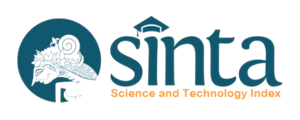THE INFLUENCE OF USING CODI ON STUDENT’S MOTIVATION IN READING
(1) Universitas Muhammadiyah Surakarta, Indonesia
(2) Universitas Muhammadiyah Surakarta, Indonesia
(3) Universitas Muhammadiyah Surakarta, Indonesia
(*) Corresponding Author
Abstract
Students' reading motivation is likely low due to internal and external factors. The internal factors, for example, are intelligence, age, gender, reading ability, attitudes, and psychological needs. The external factors include the theme, level of reading difficulty, and the type of reading. This research was conducted to know whether the use of Content Differentiated Instructions (CoDI) in teaching could affect students' motivation in reading, especially descriptive text. This kind of text was chosen because it is the simplest text among five other kinds of text that are given to beginner-level students, in this case, students of junior high school. The researcher tried to find out whether the implementation of CoDI could affect the students’ motivation in reading. In this study, the researcher used a qualitative method. The data used were in the form of answers or student responses in the form of questionnaires. The result was that using CoDI affects the students’ motivation in reading descriptive text.
Keywords
Full Text:
PDFReferences
Ashcroft, B. (2017). Postcolonial theory. The Wiley-Blackwell Encyclopedia of Social Theory, 1–5. https://doi.org/10.1002/9781118430873.est0281
Creswell, J. W. (2012). Educational research: Planning, conducting, and evaluating quantitative and qualitative research (4th ed.). Boston, MA: Pearson.
Darmadi, H. (2013). Metode penelitian pendidikan dan sosial. Bandung: Alfabeta.
Dixon, F. A., Yssel, N., McConnell, J. M., & Hardin, T. (2014) Differentiated instruction, professional development, and teacher efficacy. Journal for the Education of the Gifted, 37(2), 111–27. https://doi.org/10.1177/0162353214529042
Gaitas, S., & Martins, M. (2016). Teacher perceived difficulty in implementing differentiated instructional strategies in primary school. International Journal of Inclusive Education, 21(5), 544–56. https://doi.org/10.1080/13603116.2016.1223180
Halim, A., Sunarti, S., & Ibrahim, I. (2023). A case study on teaching English with differentiated instructions at a junior high school in Taiwan. EDULANGUE: Journal of English Language Education, 5(1), 136–153. https://doi.org/10.20414/edulangue.v5i1.5130
Ismail, S. (2019). Impact of differentiated instruction on the writing process of ESL learners. ELF Annual Research Journal, 21, 130-153.
Ismajli, H., & Imami-Morina, I. (2018). Differentiated instruction: Understanding and applying interactive strategies to meet the needs of all the students. International Journal of Instruction, 11(3), 207-218. https://doi.org/10.12973/iji.2018.11315a
Jacobse, A., Meijer, A., Lorenz, M., & Maulana, R. (2019). Differentiated instruction in secondary education: A systematic review of research evidence. Frontiers in Psychology, 10, 1-23. https://doi.org/10.3389/fpsyg.2019.02366
Johnson, A.P. (2008). Teaching reading and writing: A guidebook for tutoring and remediating students. Lanham: Rowman and Littlefield Education.
Kemendikbud. (2017). Materi pendukung literasi baca tulis. Kementerian Pendidikan dan Kebudayaan. Retrieved from https://gln.kemdikbud.go.id/glnsite/wp-content/uploads/2017/10/literasi-baca-tulis.pdf
Latz, A. O., Neumeister, K.L.S., Adams, C. M., & Pierce, R. L. (2009). Peer coaching to improve classroom differentiation: Perspectives from project CLUE. Roeper Review, 31(1), 27–39. https://doi.org/10.1080/02783190802527356
Mehany, A.A. (2022). Differentiated instruction to develop Al-Azhar students’ writing fluency. International Research Journal of Science, Technology, Education, and Management, 2(1), 26-38. https://doi.org/10.5281/zenodo.6496744
Mirawati, I.G.A., Suwastini, N.K.A., Haryanti, N.D., & Jayantini, I.G.A.S.R. (2022). Differentiated instructions: Relevant studies on its implementation. Prasi: Jurnal Bahasa, Seni, dan Pengajarannya, 17(1), 11-21. https://doi.org/10.23887/prasi.v17i1.41867
Nyoman, S., Nyoman, P., & Hery, S.M. (2022). The implementation of teaching English using differentiated instruction in senior high school during Covid-19 pandemic. Jurnal Pendidikan Bahasa Inggris Undiksha, 10(1), 46-52. https://doi.org/10.23887/jpbi.v10i1.49840
Ortega, D., Cabrera, J., & Benalcázar, J. (2018). Differentiating instruction in the language learning classroom: Theoretical considerations and practical applications. Journal of Language Teaching and Research, 9(6), 1220-1228. http://dx.doi.org/10.17507/jltr.0906.11
Pozas, M., Letsel, V., & Schneider, C. (2019). Teachers and differentiated instruction: Exploring differentiation practices to address student diversity. Journal of Research in Special Education Needs, 20, 217-230. https://doi.org/10.1111/1471-3802.12481
Sahril, S., Nur, S.M., & Auliyanti, A. (2021). The impact of differentiated instruction on students’ performance in critical reading. Eralingua Jurnal Pendidikan Bahasa Asing dan Sastra, 5(1), 275-283. https://doi.org/10.26858/eralingua.v5i1.18937
Saleh, A. (2021). The effectiveness of differentiated instruction in improving Bahraini EFL secondary school students in reading comprehension skills. Reila Journal of Research and Innovation in Language, 3(2), 135-145. https://doi.org/10.31849/reila.v3i2.6816
Shea, M. (2015). Differentiating writing instruction: Meeting the diverse needs of authors in a classroom. Journal of Inquiry and Action in Education, 6(2), 80-118. Retrieved from https://digitalcommons.buffalostate.edu/jiae/vol6/iss2/4
Slavin, R. E., & Cheung, A. (2005). A synthesis of research on language of reading instruction for English language learners. Review of Educational Research, 75(2), 247–284. https://doi.org/10.3102/00346543075002247
Subban, P. (2006). Differentiated instruction: A research basis. International Education Journal, 7(7), 935-947.
Tomlinson, C. (2015). Teaching for excellence in academically diverse classrooms. Society, 52, 203–209. https://doi.org/10.1007/s12115-015-9888-0
Tomlinson, C. A. (1995). Deciding to differentiate instruction in middle school: one school's journey. Gifted Child Quarterly, 39(2), 77–87. https://doi.org/10.1177/001698629503900204
Tomlinson, C. A. (1999). Mapping a route toward differentiated instruction. Personalized Learning, 57(1), 12–16.
Tomlinson, C. A. (2014). The differentiated classroom: Responding to the needs of all learners (2nd Ed.). Alexandria, VA: ASCD.
Tomlinson, C. A., Brighton, C., Hertberg, H., Callahan, C. M., Moon, T. R., Brimijoin, K., Conover, L.A., & Reynolds, T. (2003). Differentiating instruction in response to student readiness, interest, and learning profile in academically diverse classrooms: a review of literature. Journal for the Education of the Gifted, 27(2-3), 119–145. https://doi.org/10.1177/016235320302700203
Zens, A. (2021). The impact of differentiated learning activities on student engagement and motivation in the English language arts classroom (Master Thesis). Minnesota State University, Saint Paul, Minnesota. Retrieved from https://red.mnstate.edu/thesis/611
DOI: https://doi.org/10.24071/llt.v26i2.5709
Refbacks
- There are currently no refbacks.
Copyright (c) 2023 Saraswati Eko Ningrum

This work is licensed under a Creative Commons Attribution-ShareAlike 4.0 International License.
LLT Journal: A Journal on Language and Language Teaching Sinta 1 Certificate
.jpg)

This work is licensed under CC BY-SA.
Creative Commons Attribution-ShareAlike 4.0 International License


.png)

















